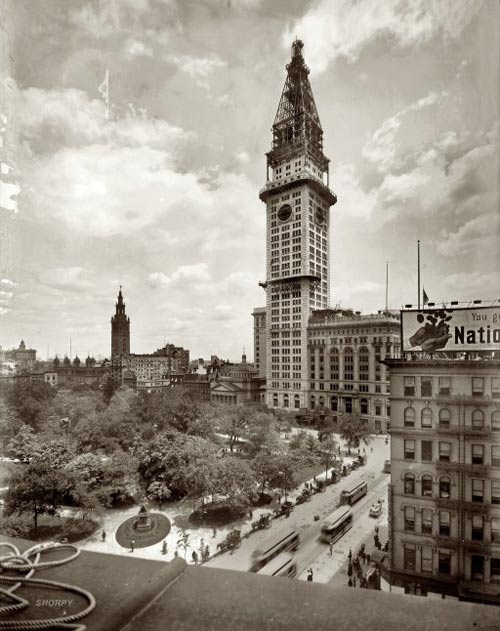The NY times recently asked eight artists what art projects they would do if they could fly to the Moon. Here’s Kara Walker’s answer:
Gil Scott Heron wrote that famous poem, “Whitey on the Moon”: “The man just upped my rent last night / Cause whitey’s on the moon / No hot water, no toilets, no lights / But whitey’s on the moon.”
I got thinking about a moon colony, which plenty of people have talked about pretty seriously over the years. So what I’d do is this: For every female child born on Earth, one sexist, white supremacist adult male would be shipped to the moon. They could colonize it to their heart’s content, and look down from a distance of a quarter-million miles. It’s a monochrome world up there; probably they’d love it. The colony would be hermetically sealed. And the rest of us could enjoy the sight of them from a safe distance. Maybe there could be some kind of selection ritual involved, something to do with menstruation and the tides — a touch of nature, to add a bit of irony justice to the endeavor.
For the supremacists, maybe traveling so far from home would help inspire a different worldview. And for the rest of us down on Earth, perhaps this is an opportunity to focus on the nature of our home planet with the same dreamy reverence we once reserved for the moon.
Here’s Scott-Heron’s Whitey on the Moon. In contrast, architect Daniel Libeskind would turn the Moon into a square by painting part of it black:
My son Noam is an astrophysicist at the Leibniz Institute in Germany, and we did some calculations about how it could work. We thought the best way would be to paint sections of it black, so they no longer reflect the sun’s light. To account for the curvature, you’d need to paint four spherical caps on the moon’s surface. That would create a kind of frame that looks square when you see it from earth.
When I profiled the Metropolitan Life Tower (and an unusual postscript) a couple of months ago, I mentioned that Daniel Libeskind was working on an addition to the building that would dwarf the iconic clock tower. New York magazine has a rendering of what the building might look like, taken from the architect’s new book.
Initial designs show a glass-curtained tube with cutaways spiraling up and around the facade to reveal segments of terraced verdure, like cultivated patches on the side of a steep alpine slope. “We didn’t just fill up the tower,” the architect says. “We’ve taken space away [from the apartments] to create the gardens,” which are actually balconies tucked within the envelope. “It’s as if nature has come back into the city,” he says.
Update: More photos and details here.
The Metropolitan Life Tower is located on the east side of Madison Square Park at 1 Madison Avenue. It has quietly become one of my favorite buildings in the city; I find myself peering up at it whenever I’m in the area. (I took a photo of the building while in line at the Shake Shack last spring…it’s a lovely color in the late afternoon light.) Inspired by a photo posted recently to Shorpy that shows the tower under construction — and before the addition of the building’s iconic clock — I did some research and discovered three things.

One. Modeled after the bell tower of St. Mark’s Basilica in Venice, the Metropolitan Life Tower was completed in 1909 and at 700 feet, it was the tallest building in the world until the Woolworth Building was completed four years later.
Two. The NY Times ran a story in December 1907 about the eventual completion of the structure and how it would take over as the world’s tallest building, surpassing another then-unfinished building, the Singer Tower. In the era before widely available air travel, the building’s vantage point was remarkable.
The view from the top was of a new New York. No other skyscrapers obstructed the vista in either direction. Passing the green roof of the Flatiron Building, the gaze literally spanned the Jersey City Heights and rested on Newark and towns on the Orange Mountains, fifteen miles away.
To the southward the skyscrapers bulked like a range of hills in steel and mortar, the Singer tower rising in the midst, a solitary watch tower on a peak. This hid the harbor, but to the left beyond the bridges, reduced at this height to gray cobwebs, the eye caught the sunlight on the sea — a long strip of shimmering silver beyond Coney Island and the Rockaways.
Three. Star architect Daniel Libeskind is allegedly working on an addition to the Metropolitan Life Building, an addition that by some accounts would reach 70 stories. You can guess how I feel about the prospect of one of those residential glass monstrosities literally and emotionally dwarfing the existing 50-story clock tower, Libeskind or no. Of course, the Metropolitan Life Tower may never have become so iconic had Metropolitan Life’s plans for a 100-story tower one block north not been scrapped because of the Great Depression. They only finished 32 floors of that building, which today houses the celebrated restaurant, Eleven Madison Park.






Stay Connected